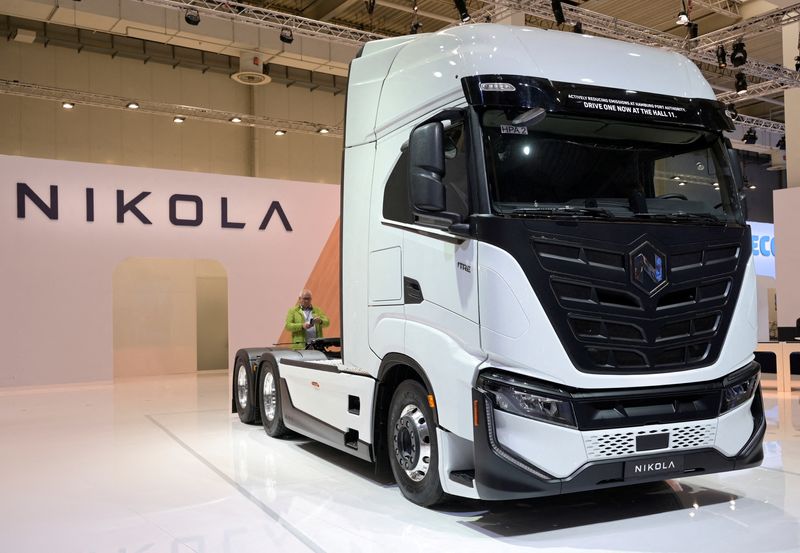
By Akash Sriram
(Reuters) – Nikola said on Wednesday it had filed for Chapter 11 bankruptcy protection and would pursue a sale of its assets, the latest electric-vehicle maker to stumble after grappling with tepid demand, rapid cash burn and funding challenges.
The development ends a challenging journey, which included several leadership changes, plummeting share values and short-seller allegations.
EV startups that went public during the pandemic, promising to revolutionize the sector, such as Fisker, Proterra and Lordstown Motors have filed for bankruptcy in recent years as funding for their capital-intensive operations dried up due to high interest rates and flagging demand.
“Like other companies in the electric vehicle industry, we have faced various market and macroeconomic factors that have impacted our ability to operate,” Nikola CEO Steve Girsky said in a statement.
“Unfortunately, our very best efforts have not been enough to overcome these significant challenges,” he added.
Elon Musk-led EV pioneer Tesla reported its first drop in annual sales in 2024 as high borrowing costs and an aging lineup crimped demand, despite offers and incentives.
Nikola, which started out making battery-powered semi-trucks and pivoted to electric trucks that use hydrogen, said it decided to initiate a sale process to maximize value and ensure an orderly wind down.
The firm will continue some support operations for trucks in the field and some hydrogen-fueling operations through the end of March.
Phoenix, Arizona-based Nikola, delivered its first vehicle in December 2021. A series of fire incidents involving its electric trucks in 2023 resulted in a recall of all its vehicles and raised safety concerns.
Nikola ramped up production of its hydrogen-powered trucks in 2024, but still lost hundreds of thousands of dollars on every vehicle sold as fleet operators were reluctant to invest in electric truck adoption amid high borrowing costs.
The stock fell about 38% on Wednesday, valuing the company at less than $50 million. A sharp plunge from a peak market capitalization of about $27 billion in 2020, when it was valued more than Ford Motor.
“Just the struggles that they have faced, plus the increasing competition, operational challenges, and high cost for the EV industry as a whole. I think all of that came together,” said Sarah Foss, head of legal at credit and restructuring analysis firm Debtwire.
STRUGGLING FINANCES
The company, which has said its Coolidge, Arizona, manufacturing facility can produce about 2,400 trucks per year across three shifts, listed assets of between $500 million and $1 billion. It estimated its liabilities were between $1 billion and $10 billion, according to a filing with the U.S. bankruptcy court for the district of Delaware.


